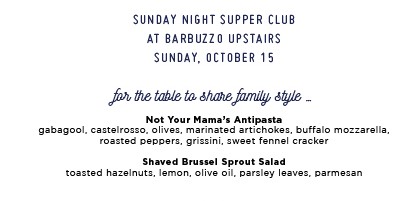You might have heard the term “gabagool” floating around, especially if you’re a fan of shows like The Sopranos. It pops up on menus of Italian-American restaurants and in discussions about regional dialects. But what exactly is gabagool? Is it a special type of Italian meat you haven’t encountered before? Let’s dive into the linguistic and culinary world to uncover the answer to this intriguing question.
Gabagool Explained: It’s All About Capicola
The mystery of gabagool is actually quite easily solved: gabagool is simply capicola. Yes, that delicious, spicy, dry-cured pork cold cut you might already know and love. So, why the different name? The shift from “capicola” to “gabagool” is a fascinating example of linguistic variation, specifically a feature of the Italian-American dialect, particularly in and around the New York City, New Jersey, and Philadelphia areas.
This transformation is rooted in the pronunciation patterns of certain Southern Italian dialects, specifically Neapolitan. As noted by Urban Dictionary and linguistic observations, this involves a process called “voiced consonant substitution.” Essentially, certain unvoiced consonants in Italian words get replaced by their voiced counterparts when spoken in these dialects.
Think of it like this:
- “Capicola” starts with a “c” sound (unvoiced “k”). This shifts to a “g” sound (voiced “g”) becoming “gabagool”.
- Similarly, “manicotti” can become “manigot,” and “ricotta” can become “rigot” in this dialect.
It’s not a random mistake; it’s a consistent phonetic pattern found in these regional Italian dialects that carried over and evolved within Italian-American communities.
The Sopranos and Gabagool’s Rise to Fame
While “gabagool” has been used within Italian-American communities for generations, its entry into mainstream pop culture is largely attributed to the critically acclaimed HBO series, The Sopranos.
The show, set in New Jersey and focusing on an Italian-American mobster family, authentically incorporated many aspects of this culture, including language. The character Silvio Dante, portrayed memorably by Steven Van Zandt, is particularly known for his iconic demand, “Gabagool! Over here!” in a famous scene.
This moment, and many other instances of “gabagool” throughout the series, didn’t just entertain viewers; it cemented the word in the broader American lexicon. The Sopranos brought the term out of specific communities and into national awareness, turning “gabagool” into a shorthand for Italian-American culture, especially of the New Jersey/New York variety.
Even characters within the show understand the cultural specificity of the term. In one memorable line, Meadow Soprano quips, “Don’t eat gabagool, Grandma, it’s nothing but fat and nitrates,” highlighting a generational difference in attitudes towards traditional Italian-American cuisine, even among those who use the dialect.
Beyond Pronunciation: Gabagool as a Cultural Identifier
Gabagool is more than just a different way to pronounce capicola. It’s become an emblem of identity. Saying “gabagool, ovah here!” isn’t simply asking for a slice of cured meat; it’s performing a specific cultural identity. It signals a connection to a particular type of Italian-American heritage, often associated with the tri-state area.
This is reinforced by the online reaction to The Sopranos clips featuring the word. Comments on YouTube and in online forums often express a fondness and recognition specifically for the term “gabagool,” highlighting its cultural significance and humorous appeal.
Interestingly, if you were to travel to Southern Italy, the origin of these dialects, you likely wouldn’t hear “gabagool.” This further emphasizes that it’s not simply an Italian word, but a distinctly Italian-American linguistic and cultural marker.
Gabagool in the Wild: Misinterpretations and Context
However, like any cultural marker, using “gabagool” outside of its intended context can lead to misunderstandings or even humorous misfires. A popular example of this is seen in a clip from the American version of The Office.
In this scene, the character Michael Scott attempts to impress an Italian-American client by ordering “gabagool” at a standard business lunch restaurant. The waitress is completely bewildered, and the attempt to connect culturally falls flat. This illustrates a crucial point: understanding the word “gabagool” isn’t enough; you need to understand the context in which it’s appropriately used.
Just knowing the pronunciation shift isn’t sufficient; you need to grasp the cultural nuances, the settings, and the people who use it authentically. Using “gabagool” in a generic chain restaurant is as out of place as wearing a tuxedo to a baseball game.
In conclusion, “gabagool” is a fascinating example of how language, culture, and identity intertwine. It’s a testament to the way language evolves within communities and how seemingly simple pronunciation variations can carry significant cultural weight. So, the next time you hear “gabagool,” you’ll know it’s not just a funny word; it’s a flavorful slice of Italian-American culture, best savored with an understanding of its rich context.

